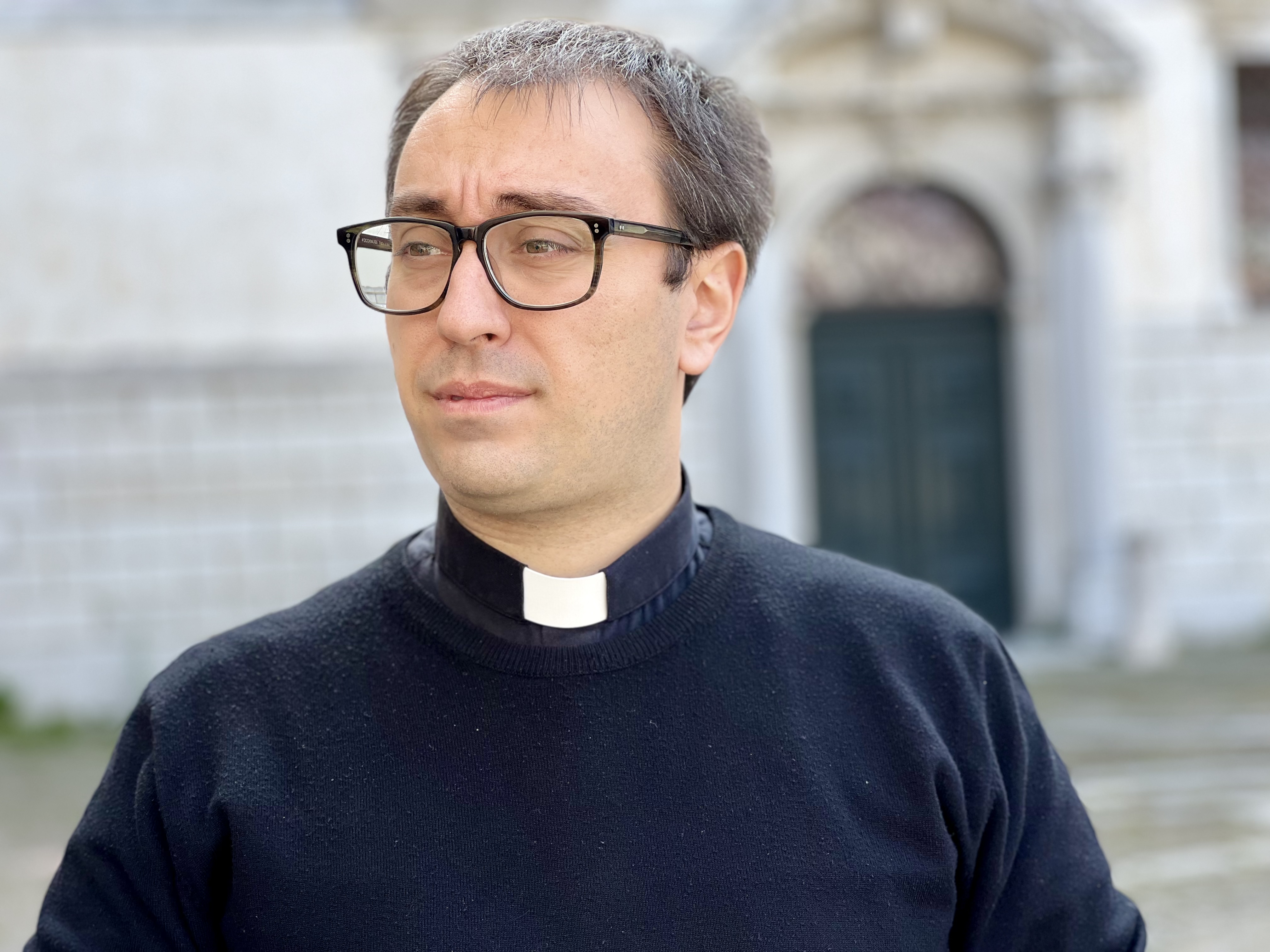Venice, 16 November, 2022 – Majestic and solemn, wearing the armour of the “Capitano da Mar”, with one arm she clasps her son to her, with the other she brandishes a sceptre, a sign of power attributed to the commanders of the Venetian fleets. A figure that, for more than three hundred years, has been watching over St. Mark’s Basin, protecting the lagoon and the city with her loving gaze. The Virgin Mary of the Basilica of Santa Maria della Salute holds a special place in the hearts of the Venetians because in 1630 she saved them from one of the worst epidemics of plague, which brought the whole territory of the Serenissima to its knees. Commemorating the grace received, on November 21 of each year, on the day of the Presentation of the Blessed Virgin Mary, the faithful of the lagoon go on a pilgrimage to her temple, to pray and ask for protection for themselves and their loved ones.
One-hundred-and-fifty are the steps that, going through the backbones of the church, lead up to the terrace of the major dome, accessible from his year thanks to the completion of maintenance work on the walkways. Telling the story and anecdotes of this masterpiece of 17th-century architecture is Don Marco Zane, Director of the Social Communications Office of the Patriarchate of Venice and Vice-Rector of the Patriarchal Seminary of Venice.
It was April 1, 1631 when, in the area behind Punta della Dogana, the first stone of the church of Santa Maria della Salute was laid, commissioned by the Serenissima as a vow to the Virgin Mary for having preserved Venice from the terrible plague of the 17th century, which throughout the territory of the Republic had taken the lives of more than 700 thousand people. Fifty years later, the church was solemnly consecrated by Patriarch Alvise Sagredo. Designed by the famous architect Baldassarre Longhena, who was inspired by the Crown of the Holy Rosary, the building’s main body has an octagonal shape.
“The concern of Longhena”, reports Don Marco, “was to have a slender building, with volumes that would invite to imagine a sort of lightness, but also that was statically robust and capable of adequately supporting itself”. More than three hundred years later, its sobriety, its modernity and its elegance are still able to leave breathless visitors and faithful who bring a candle to the Virgin Mary.
On the central body of the temple rests the monumental hemispherical dome, which rises above St. Mark’s Basin and is the largest that can be found in Venice. Almost 40 meters high, this dome fearlessly looks at its neighbours, the bell tower of San Giorgio Maggiore and the famous “Paròn de casa”, the bell tower of St. Mark’s Basilica.
“From an engineering point of view, the dome has a particular feature”, reveals Don Marco, “it is mainly made of brick and stone, but its sphere, which makes up the fundamental part, is entirely made of wood and only its external cladding is in lead”.
Above is placed a lantern, with at the base a balustrade with columns from which rise eight obelisks, symbolizing the tips of a crown. The structure is closed by another small dome on top of which there is a statue with a peculiar meaning.
“Above the dome, is represented the Blessed Virgin Mary. With one arm, she holds her son, our Lord Jesus Christ, and with the other, a sceptre”, tells the Vice-Rector of the Seminary. “It is not a sign of power, Mary is not simply depicted as Our Lady, but carries with her the insignia of command: in fact, under her mantle, she wears an armour, she is dressed as a Capitana da Mar”.
A role comparable to the one of an admiral, the Capitano da Mar had his own headdress, which had a cylindric form, and a scepter that was given to him by the Senate of the Republic of Venice as a symbol of power. “So, it is as if the Virgin Mary, with her powerful intercession, continues to pray for us, defending Venice, which wanted to rise again after the 17th-century pestilence, and at the same time it is as if the statue wants to be an allegory of the city that rises again”, adds Don Marco.
To support this masterpiece of architecture are the buttresses that embrace the structure. They have the shape of spiral scrolls, with a stylized rose in the center, a recurring element in the entire Basilica and which alludes to the prayer that Christians traditionally offer to Our Lady. “It is as if the whole building was a sort of great rosary, a great rose that the city of Venice wanted to offer to the Blessed Virgin Mary”, concludes the priest.
If you want to admire a spectacular and little-known view of Venice, you can climb on top of the dome of the Santa Maria della Salute in groups of up to 5 people, after having paid a contribution aimed at supporting the restoration of the building.
To check visiting times and days, see the relevant webpage https://basilicasalutevenezia.it/prodotto/la-cupola/

